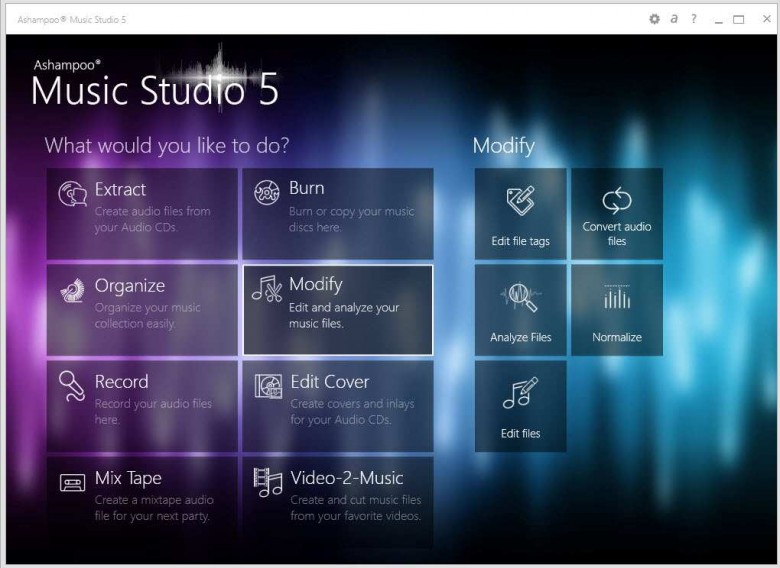


If -0.1dbFS works for you then it makes the most sense. This is completely personal preference though, and applies to your work flow method and the tools that you are using. You'll end up turning down all the samples you normalized to the max. However if you put individual samples through FX chains in Kontakt, you might get the same clipping problem. If you're using something like Kontakt, to put all your samples in, you can just adjust the overall gain. This leave me to bring up the gain on the mixing screen, where I want to be when adjusting levels. I prefer recording at around -6dbFS, to give myself a little headroom when I use it. Now I have to go into the plug-in and adjust the input gain level. This means if I put a Kick Drum sample on Channel 1, and it's peaking at -0.1dbFS, then I apply some channel strip plug-ins, it's quite likely it'll be clipping straight away. The channel fader on an audio track is post-plugin.
#ASHAMPOO MUSIC STUDIO VOLUME NORMALIZATION PRO#
I use Pro Tools where the channel faders default to unity gain in a new project. If you normalize all of your samples to -0.1 dB, then use them in your DAW projects, you'll end up clipping your audio tracks all the time as soon as you use a plug-in. But for inserting into projects, this is fine because level adjustments will be made in the project anyway. So your library of parts/samples each might have a different perceived loudness.

Remember that peak level and perceived loudness differs.
#ASHAMPOO MUSIC STUDIO VOLUME NORMALIZATION FULL#
And at -0.1dBFS peak, you are saving the audio as close to full scale as possible. So if you were mastering for that use, you would set the peak at -10dB.įor storage and use in a library, I would say that consistency is most important. I was told that limiters in nightclubs can begin to affect the signal at as low as -10dB. 3dBFS Is, I think a safe 'guess' as to where a limiter may be triggered in most common use. o.1dBFS is a peak normalization preset because basically, that is the highest level a sample can be without it being perceived as an overload in some hardware or software.

Sometimes a limiter will be applied at varying levels below 0dB to prevent overload and clipping distortion. If there is a limiter of some kind in the next phase of the process. Everything you need is contained within a clean, logical user interface.In my experience, it all depends on where the audio is to be used next. And to spruce up your collection, you can use the built-in cover editor to produce fast and creative cover designs based on templates and other graphical tools. You can cut and edit audio on up to three separate tracks. With Ashampoo Music Studio, you will be able to perform various editing actions like converting, splitting, analyzing, and normalizing audio files. You can quickly rip audio CDs via its straightforward automatic naming and cover search, and if that's not fast enough, you can do it faster with the Quick Rip option. It includes the tools required to organize an entire music collection, whether with uniform naming schemes or locations. Ashampoo Music Studio is an all-in-one solution for your music and audio files allowing easy recording, editing, converting, and burning of all your audio files.


 0 kommentar(er)
0 kommentar(er)
